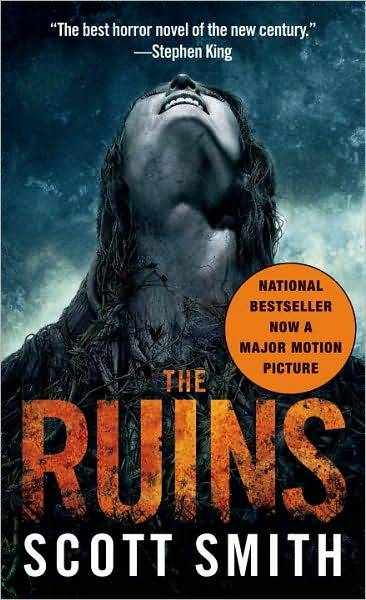 Stephen King describes this book as “your basic long scream of horror.” I read it and uttered a basic long scream of boredom. It’s another pandering “wants to be a horror movie” book that does everything except list the names of ideal actors for the film adaptation in the cover sleeve.
Stephen King describes this book as “your basic long scream of horror.” I read it and uttered a basic long scream of boredom. It’s another pandering “wants to be a horror movie” book that does everything except list the names of ideal actors for the film adaptation in the cover sleeve.
Why do I see such a neglect for literature in horror? Literature’s great. Literature rules. Literature can do things and access places that cinema never can and never will, and yet writers almost seem to treat it as a necessary evil on the road to a screenplay. Yeah, books. Those things made of paper. No reason to bother with them, except that sometimes they turn into movies.
In this case, the “film über alles” attitude has resulted in a bare bones, uninvolving story that consists primarily of descriptions of visuals. The story’s totally familiar. A bunch of college kids are on vacation, and instead of a guy in a hockey mask they run afoul of evil plants.
Why plants? Welcome to modern horror: there’s no logic to why anything happens. The book’s floral nemeses are kept shadowy and mysterious, allowing Scott Smith to imbue them with whatever characteristics are convenient at the moment. At one point the vines are drinking the tourists’ blood. At another point they’re imitating the tourists’ speech. Why stop there? Why not have the plants walk around? Everything that happens is totally arbitrary.
Roger Ebert said it very well when talking about Labyrinth. “I have a problem with almost all nightmare movies: They aren’t as suspenseful as they should be because they don’t have to follow any logic. Anything can happen, nothing needs to happen, nothing is as it seems and the rules keep changing. Consider, for example, the scene in “Labyrinth” where Sarah thinks she is waking up from her horrible dream and opens the door of her bedroom. Anything could be outside that door.Therefore, we’re wasting out psychic energy by caring. “
Prose does not carry across into a movie, so Scott Smith doesn’t give much of a shit about it here. It’s written in a bare-bones reportage style with not a word wasted, and not a word put to good use. The book’s horror works at an exclusively visual level, and this sort of thing needs a stabbing orchestral score to be really effective. Nowhere does the prose start to work magic.
The book is overlong and exhausting, with too many scares pitched at the same level, and not enough space to breathe. But it takes several hours to read, while the movie version is just 90 minutes long, so – another indicator of the book being a troublesome, flawed frog, while the movie adaptation is the handsome prince. All that’s missing is the scrolling credits at the end. Fans can recreate the scrolling at home by feeding The Ruins‘ pages to a shredder.
No Comments »
Comments are moderated and may take up to 24 hours to appear.
No comments yet.
